A common question is where to raise caterpillars, and moths. To answer this question we must first understand that all depends on the species. There are some basic methos applied to all species that change throughout the life and stage of the caterpillar. The life cycle consists of 4 parts:
Egg
Caterpillar
Cocoon
Imago
The life of a butterfly begins with an egg, which can be incubated in Petri dishes or plastic boxes of an adequate size. Some species require a moist environment while others need a dry one. Besides moisture or dryness, some species require a higher temperature than others.
Subsequently, caterpillars hatch from the eggs, which during their lifetime go through several developmental stages. These stages are called instars and are designated as, for example, L1, L2…. Caterpillars usually have 5-6 instars, however, for example, species from the genus Automeris may have 7-8.
Caterpillars can initially be kept in plastic boxes, most species will tolerate them up to L3, and then they prefer spacious and well-ventilated areas. However, this is also limited to individual species; some species can be reared from egg to cocoon in a box, while conversely, some are reared in mesh enclosures from L1.
Species that live in our area or in similar climatic zones can be reared outside directly on trees and host plants in mesh nets designed for this purpose.
At the end of their life cycle, caterpillars spin cocoons in which the caterpillar sheds its skin once more and becomes a pupa. However, some species do not spin a cocoon, but burrow into the ground or under leaves and directly become a pupa.
Cocoons can be kept in the mesh enclosures where the caterpillars were reared, so the butterfly can climb to a raised point without difficulty and stretch its wings after emerging. Cocoons need moisture throughout their development. It is sufficient to place paper towels at the bottom of the mesh enclosure, which should be moistened occasionally. However, it's important to be cautious of mold formation.
Imago, meaning adult butterflies from the family Saturniidae do not consume food, therefore they live only a few days to at most weeks. Food is primarily consumed by diurnal butterflies, but there are also a few exceptions where some species of nocturnal butterflies consume food. Butterflies can be kept throughout their entire lifespan in mesh enclosures where mating also occurs.
Method of egg incubation
The eggs are placed on a dry paper towel in a plastic box, along with a smaller box containing wet paper towels.
The main box is closed to maintain humidity.
This method has proven effective for incubating species that require higher humidity.

The method of egg incubation in a Petri dish, suitable for an environment with lower humidity.

Methods of rearing caterpillars
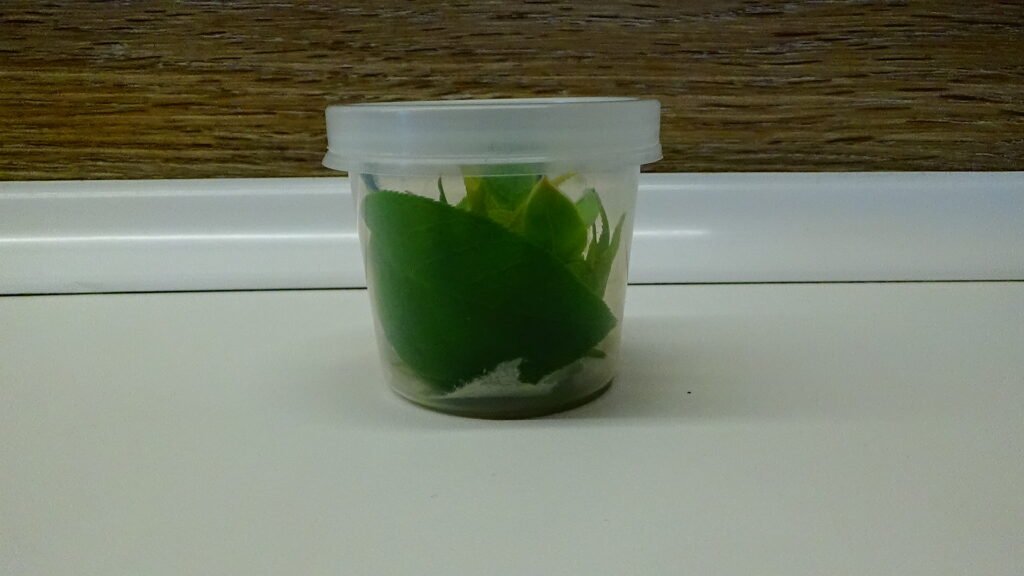
This enclosure is suitable for rearing various species, predominantly in the first instar (L1).
Inside, there are leaves and a piece of paper towel on the bottom.
This method is practical because it makes it easier for caterpillars to find food and settle in a smaller space.
The enclosure can be completely closed on top, for species requiring higher humidity.
For species that are sensitive to humidity and require air circulation, the plastic lid can be replaced with a monofilament mesh.
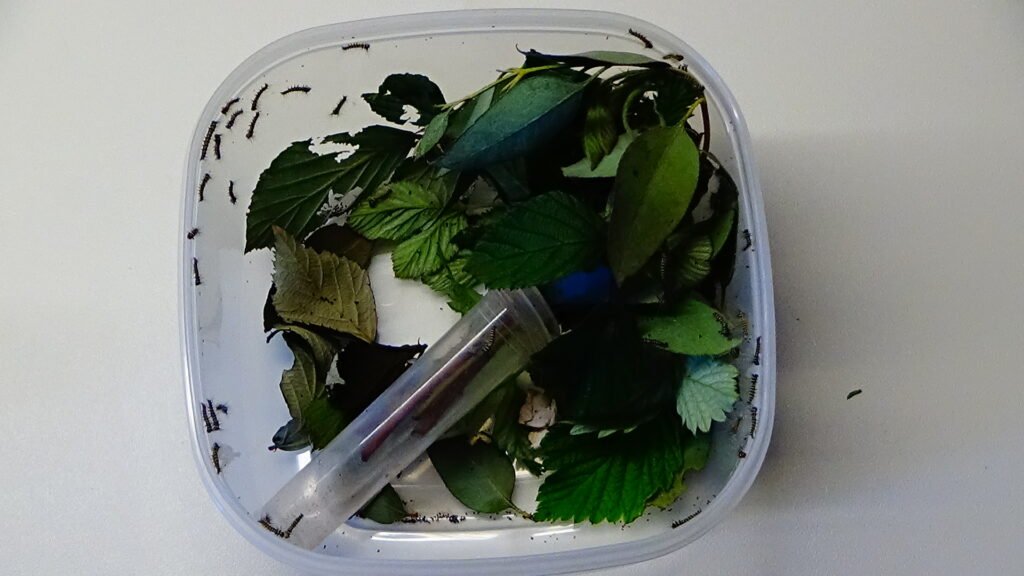
Fresh food can be kept inside the plastic enclosure in a vial with water when using a mesh instead of a plastic lid.
Rearing caterpillars with a modified plastic lid, which has been partially replaced by a mesh.

Inside, the food is placed in a cup with water, and the openings are secured to prevent caterpillars from falling into the water.
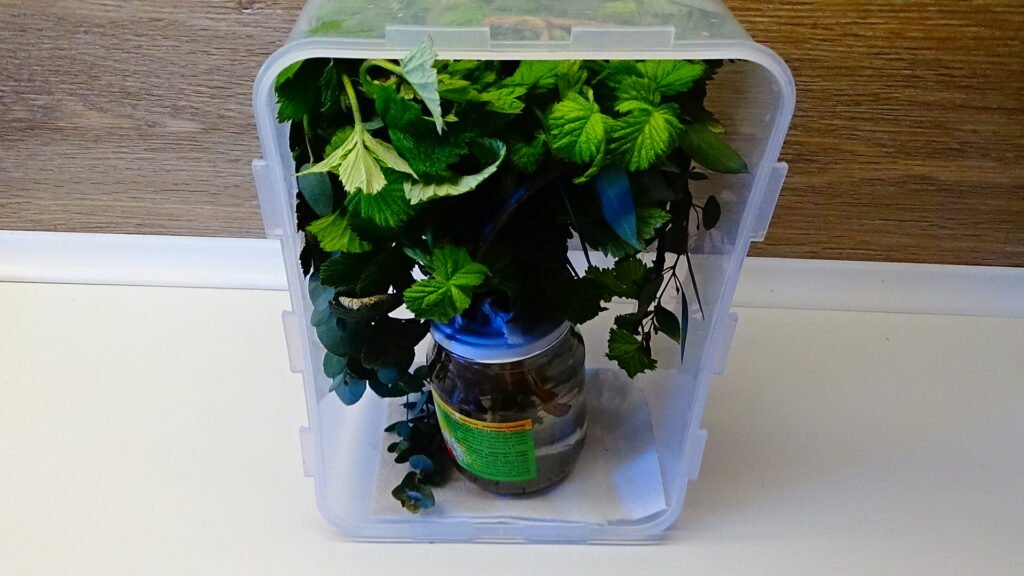
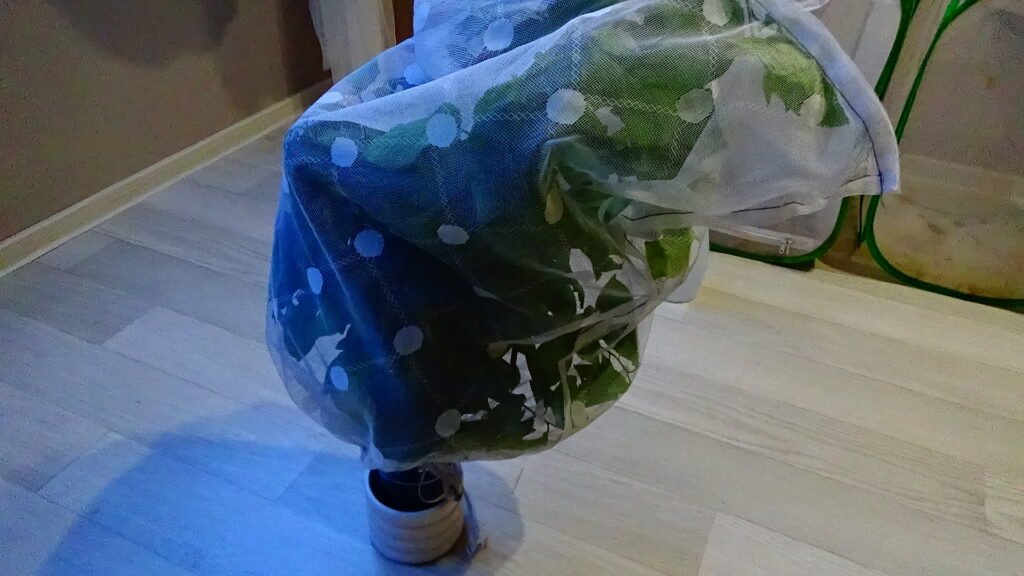
Rearing caterpillars in a monofilament mesh, placed on a plant cutting, which is in a bottle with water to keep it fresh.
This method is suitable for species in older instars or for those that are very sensitive to moist environments and require well-ventilated spaces.
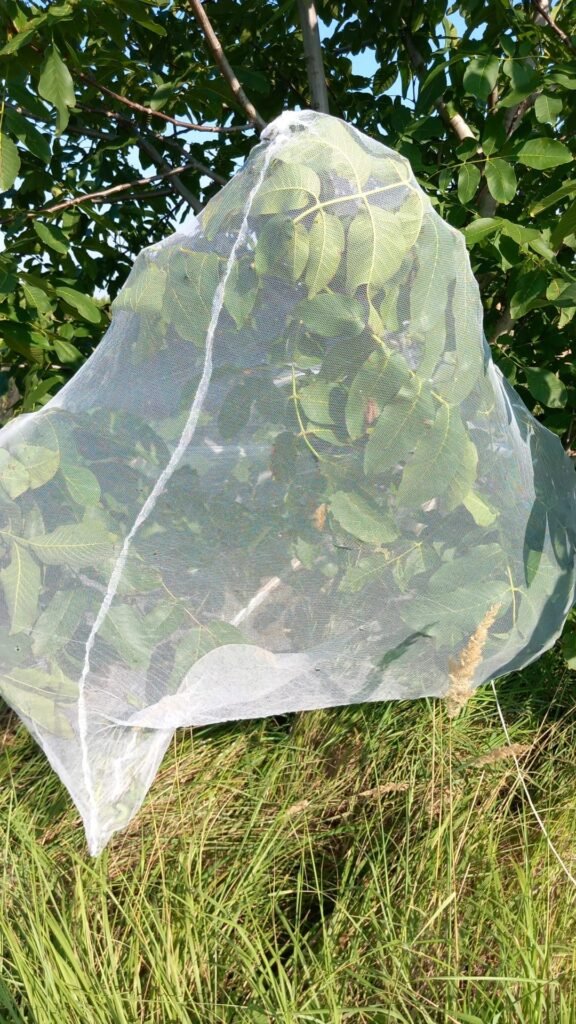
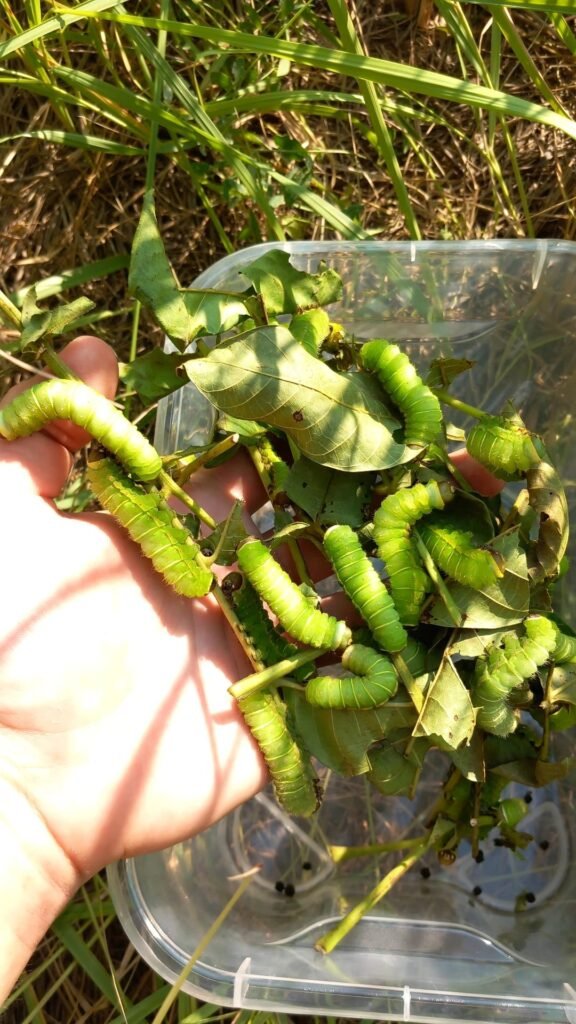
This type of rearing is similar to the previous one, with the difference that rearing in monofilament meshes takes place directly on the host plant outdoors.
It is suitable for species that come from a similar climate zone or require well-ventilated and spacious conditions. (Actias luna, Hyalophora cecropia, Antheraea polyphemus, Rhodinia fugax, Dryocampa rubicunda, Graellsia isabellae…)
Incubation and overwintering of cocoons
Incubation of pupae in a mesh enclosure with sphagnum moss at the bottom to maintain humidity.
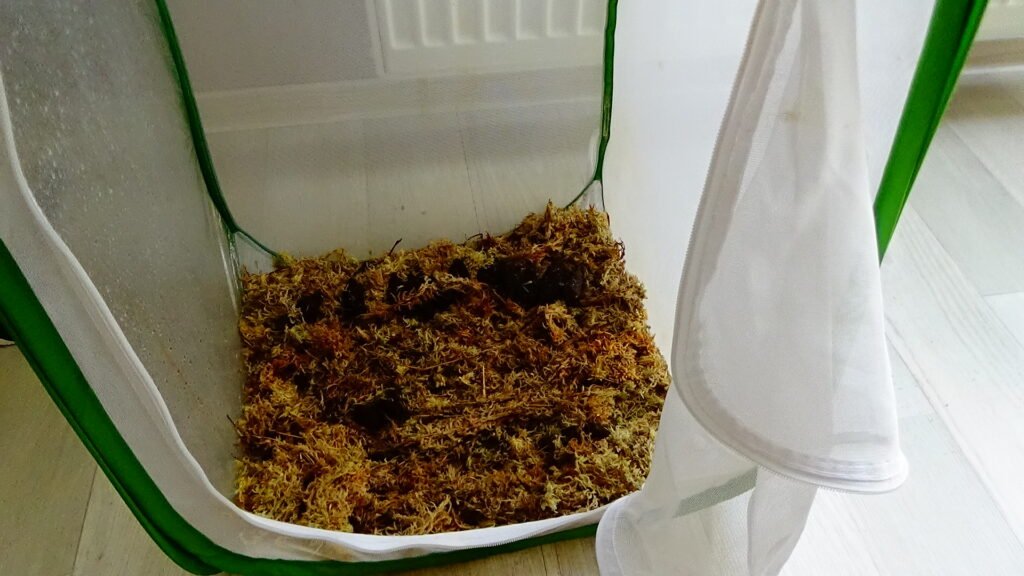
Overwintering pupae in the refrigerator, which are in a plastic box filled with dry sphagnum moss that is regularly moistened, with the lid open to prevent the formation of mold.
With this type of overwintering, it's important to maintain the correct humidity to prevent the pupae from drying out in the refrigerator or the box from getting moldy.
It's important to moisten them regularly and also to air them out.

